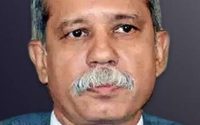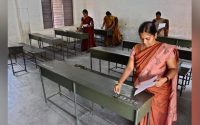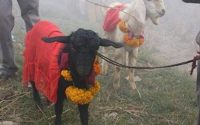$100 Website Offer
Get your personal website + domain for just $100.
Limited Time Offer!
Claim Your Website NowJune 15, 2019
300 Doctors Quit In Bengal, Centre Blames Mamata Banerjee: 10 Points
Source:-ndtv.com
KOLKATA/NEW DELHI: Nearly 300 doctors resigned from government hospitals in West Bengal as their protest against an attack on their colleagues earlier this week in Kolkata escalated on Friday. Demanding better security at hospitals, doctors in Bengal and across India skipped work and held demonstrations. The country’s top medical body also announced a nationwide strike on Monday. Blaming the Mamata Banerjee government for the stalemate, Union Health Minister Harsh Vardhan appealed to her to “not make it a prestige issue”. Ms Banerjee, meanwhile, invited the agitating junior doctors for a meeting, which they declined.
- “Instead of taking action against the attackers, she (Mamata Banerjee) gave the doctors an ultimatum, warned and threatened them because of which doctors of West Bengal and across the country are angry,” Minister Harsh Vardhan said, also requesting the doctors to end their strike.
- The doctors in Bengal have set six conditions including an unconditional apologyfrom Ms Banerjee and action against those who assaulted their colleagues to withdraw their four-day-old protest, news agency PTI reported.
- Around 300 doctors, including the heads of departments of medical colleges and other hospitals in Kolkata, Burdwan, Darjeeling and North 24 Parganas districts, sent their resignation letters to the state director of medical education.
- Ms Banerjee, whose get-back-to-work deadline of 2 pm on Friday was emphatically ignored, once again attacked “outsiders” for the doctors’ protest. A delegation of senior doctors met with the Chief Minister in Kolkata.
- The Indian Medical Association (IMA), the country’s leading doctors’ body, launched a four-day nationwide protest from Friday and called a strike on Monday. Calling the attack on doctors “barbaric”, the IMA said it will ask Prime Minister Narendra Modi and Home Minister Amit Shah to bring out a central law against such violence.
- Doctors from across India organised demonstrations and skipped work in solidarity with their colleagues from West Bengal. Bengal was the worst hit by the strike with at least 13 big government hospitals affected.
- In the national capital, resident doctors at the premier All India Institute of Medical Sciences (AIIMS) and Safdarjung Hospital stayed away from work. Medical services in Mumbai, Hyderabad and Bengaluru were also affected by protests.
- Doctors in Uttar Pradesh, Maharashtra, Rajasthan, Telangana, Chhattisgarh, Odisha, Assam, Tripura, Goa and Chandigarh took out demonstrations.
- The Supreme Court agreed to hear a public interest litigation or PIL over the safety and security of doctors in government hospitals across the country. Hearing a similar case, the Calcutta High Court asked the West Bengal government to end the impasse and respond to the petition in seven days.
- The protests were sparked by an attack at the NRS Medical College in Kolkata on Monday that left two junior doctors seriously injured after a dispute with a family whose relative had died.



